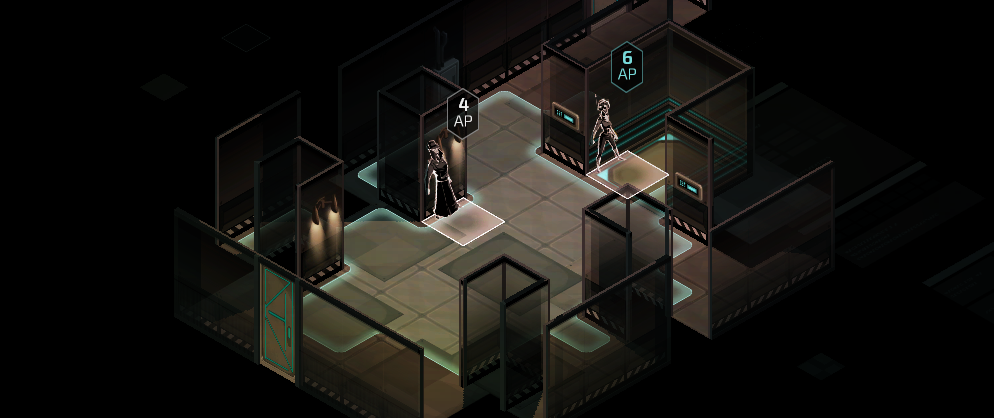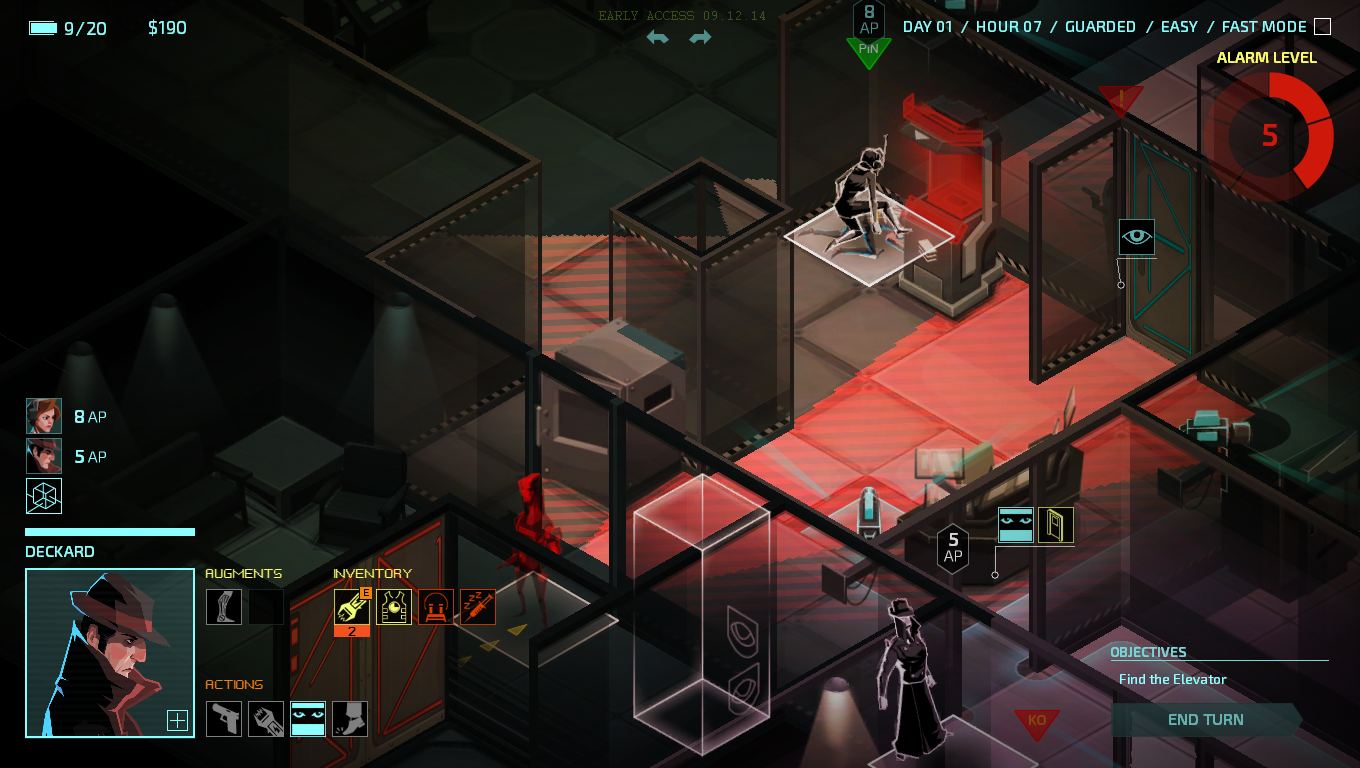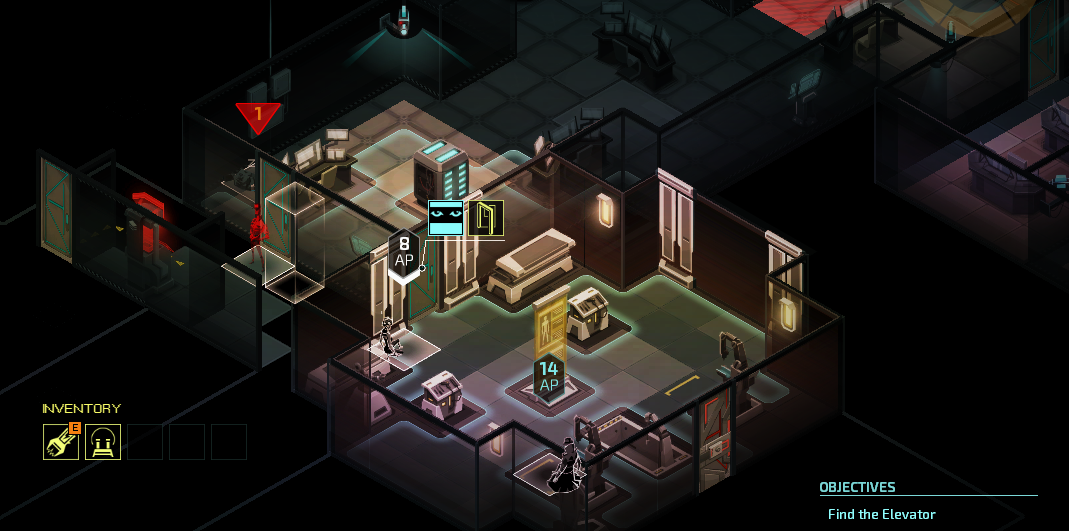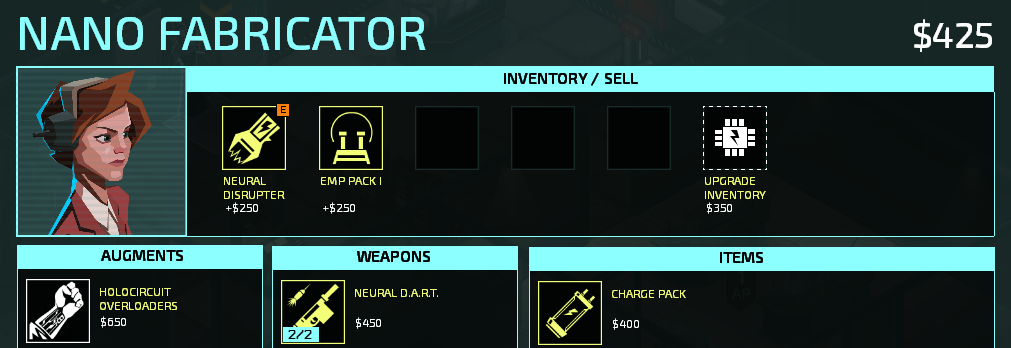TOM FRANCIS
REGRETS THIS ALREADY
Hello! I'm Tom. I'm a game designer, writer, and programmer on Gunpoint, Heat Signature, and Tactical Breach Wizards. Here's some more info on all the games I've worked on, here are the videos I make on YouTube, and here are two short stories I wrote for the Machine of Death collections.
Theme
By me. Uses Adaptive Images by Matt Wilcox.
Search

What Works And Why: Invisible Inc
What Works And Why is a thing where I dig into the design of a game I like and try to analyse what makes it good, hopefully to learn from it but also because I love this stuff.
What is it?
A turn-based stealth game with randomly generated levels and no savegames. You have two secret agents with different special abilities, and you choose from offices of varying difficulties and rewards to break into and steal money, equipment and abilities. You break in by carefully peering round corners and doors, ambushing unwitting guards with your tazers, and hacking security devices from a special vision mode.
If you want a better idea of how it plays, I recorded myself going through one mission, and talked through my thinking and how the game works.
What works and why?
Turn-Based Stealth
As in XCOM, there are lots of interesting considerations to precisely where you should move each team member each turn. But instead of optimising accuracy percentages, you’re trying to avoid being seen at all – and usually succeeding. This makes it feel much cleaner and more satisfying than turn-based gunfights, but no less tense or eventful. Being directly seen is a rare, crisis-level event, but lots can happen between ‘perfect stealth’ and ‘caught at gunpoint’.
The edge of a guard’s vision will cause you to be ‘noticed’, causing the guard to come closer on his next turn. Being seen by a camera will raise the alarm level and bring guards running, but not fail or damage you. Your tazer only knocks guards out temporarily, and needs time to recharge, leaving you vulnerable. These tensions and trade-offs are what you’re worrying about on a moment-to-moment basis.
It says something that the last horrifying, gasp-out-loud moment I had in Invisible Inc was when one of my agents shot and killed someone. I’d set them in overwatch to hopefully take out a drone, but a human guard walked in front of them. I was distraught at a) wasting my only shot on a guard who could have been tazed, and b) raising the alarm level by tripping his heatbeat sensor. Not at the loss of life, obvs.
Hard Intel
I think every stealth game I like gives you an unrealistic intel advantage. Deus Ex makes your enemies short sighted. Human Revolution lets you switch to third person to see round corners. Far Cry 4 lets you tag people to see them through walls. I decided to go all the way in Gunpoint and let you see everything at all times.
Invisible Inc’s is subtle but extremely powerful. You can only see areas your agents and hacked cameras can see, but: you can see if those areas are being watched. The vision of enemies, even enemies you don’t know about, shows up as if it were bright red light. That doesn’t always tell you exactly where these unknown enemies are, but it gives you perfect, reliable, hard-and-fast intel about the most crucial thing you could want to know: if I move there, will I be seen? Having that intel, and being able to rely on it, makes Invisible Inc a game of strategy rather than one of guesswork and risk management.
Failure Spectrum
When you can fail at something but still carry on playing, I call the range of states between perfect success and total failure a ‘failure spectrum’: there’s a spectrum of possible outcomes, and screw-ups can move you towards the failure end and recoveries can (sometimes) move you back up towards success. In Invisible Inc, there are a few different failure spectrums that you could break down something like this:
Equipment:
- Leave with all of the money and equipment in the level without losing any
- Leave with more money and equipment than you spent
- Leave with some of your money and equipment left
- Lose it all somehow?!
Evasion:
- Get what you want without being noticed
- Get noticed, but not directly seen
- Get seen, but slip away before anyone is hurt
- Someone gets knocked out but not injured
- Someone gets injured but the other agent revives them
- Someone gets injured and you can’t revive them, but you drag them to the exit (thanks, Skeed in the comments!)
- Someone gets injured and you have to leave them behind, losing them forever
- The whole team gets injured and therefore everyone dies, game over
Style:
- Get what you want without killing anyone
- Get what you want without hurting anyone
- Get what you want without using the ‘Rewind’ function
How much you care about each of those things is subjective in some cases, but together they form a huge range of possible outcomes. Every encounter and decision you make as you play is moving you up or down on that spectrum, so you care about them all.
A big failure spectrum is good because a lot of the most emotional moments in a game happen on the cusp of failure. If you were this close to being seen, your escape is exhilarating. But if failure is a ‘game over’ screen, spending a lot of time on the cusp of failure means a lot of ‘game over’ screens. Each one interrupts your immersion and ends your investment in this current run. It pulls you out of the game, and you find yourself in a menu, then at a checkpoint or a savegame. Mentally acclimatising to how much of your story has been lost forces you to disengage from it, and you have to build up all that immersion again from scratch.
If failure isn’t game over, it’s still nail-biting when to come close to it. And when you do slip over the threshold, it’s just another development in the story you’re creating and living through. The challenge switches to one about recovering from your screw-up, which can be tense and exciting in itself. Each level of a failure spectrum ultimately means the game can make you spend more of your time at that exhilarating cusp of failure without introducing frustrating interruptions.
Systems Interplay
This one’s harder to define precisely because the best moments it creates are always unique to the situation. But basically I mean: all these cool systems link into each other, so that problems in one can be solved with another.
My favourite example is when I was trying to ambush a guard with triple power armour. One layer of armour means you need a weapon with one level of piercing to harm them. Triple means you need three. I have none. But power armour is a device, and devices can be hacked.
I spent three turns using my Parasite program to break down each layer of his power armour, and one more getting Deckard in position to take him out. At last he’s in range, so I have him run out of cover, stand directly behind the guard, and- nothing. The tazer icon is disabled. I check the guard’s info: 1 layer of armour. It must have regenerated.
This is bad. I used all of Deckard’s movement points to get him right up to the unsuspecting guard, so now he’s stranded there. The guard is facing a wall, he will absolutely turn around on his turn. And Deckard’s cloaking device is nowhere near being ready again. I have the hacking power to put another parasite on his armour, but it wouldn’t eat through even one layer until the start of our next turn, by which point it would be too late. I don’t have any other hacking tools, not even the basic Lockpick that breaks 1 firewall.
But hang on – didn’t I see that for sale? We’re on this mission to buy new hacking upgrades, and my other agent Internationale reached the terminal last turn – she found nothing good we could afford. The Lockpick isn’t good, really, but right now it would be a life saver. And if we sold one of my less useful hacking programs, I think we could afford it.
Internationale is miles from the terminal, but if she sprints full pelt, she could just make it to the console this turn – alerting everyone on the way. She sprints, everyone hears the footsteps, but she makes it. Selling our Hunter tool gets us enough for the Lockpick, and she buys it. I switch to hacking mode, use the Lockpick on the guard’s power armour, and it shuts down. At last, Deckard’s tazer icon lights up, and I click it.
Grab, zap, whomp – he’s down.
That was the guard AI, feeding into the item system, feeding into the penetration system, feeding into the hacking system, feeding into the shopping system, feeding into the noise and movement system.
On another level, I might have been able to have Internationale buy her own cloaking unit and sneak up to the guard with a Mark II Buster Chip to over-ride his armour by hand.
Or if she’d been Xu, he could use an EMP fist-needle to reboot it.
Or Internationale could have Buster Chipped a drone with a penetrating gun mount to just blow through it.
Or if the Safe Alarm Daemon had been active, she could have intentionally opened a safe to trip one and cause the guard to investigate that next instead of turning around.
I’ve even heard of someone intentionally knocking out their own agent for two turns just because guards don’t notice prone bodies: if I’d had a flash grenade, I could have KO’d Deckard myself to save him.
More Info
It’s in Early Access at the moment. Obviously I like it already, but I would pretty much always advise waiting until the developer calls a game done – I’m only playing now because I need to judge it for the IGF.
Not least because of fucking cocking shit like this shitting shit:
Oh. Heads up, 'Abort Mission' in Invisible Inc doesn't mean that so much as 'kill all agents on the spot and end campaign'.
— Tom Francis (@Pentadact) December 27, 2014
More What Works And Why



